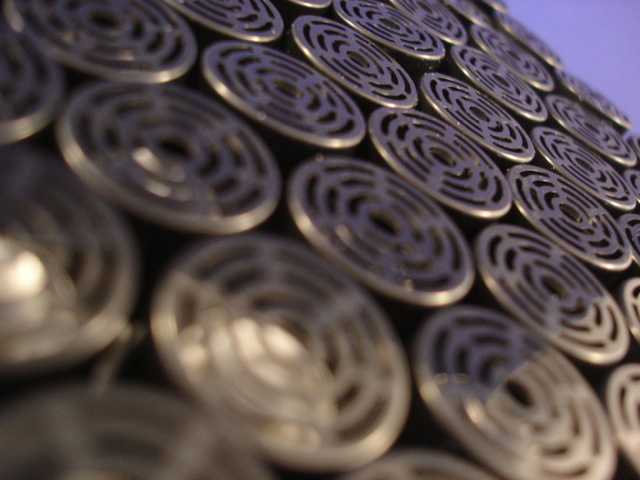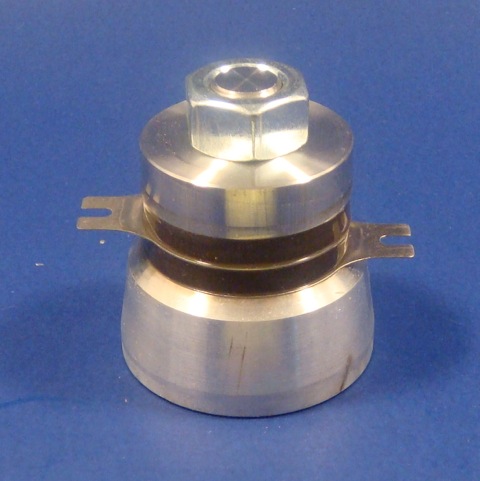What Is A Transducer?
 A transducer is any device used to convert energy from one form to another - typically when converting input energy into output energy. For transduction to occur, a change from one form of energy must also take place, such as a conversion from mechanical to electrical energy or vice versa. There are many types of transducers and the uses of transducers are widespread, impacting us in many ways. A common example is a microphone, which converts the input energy - or the sound waves produced by a voice or instrument - to output energy, or the electrical impulses in the form of amplified sound.
A transducer is any device used to convert energy from one form to another - typically when converting input energy into output energy. For transduction to occur, a change from one form of energy must also take place, such as a conversion from mechanical to electrical energy or vice versa. There are many types of transducers and the uses of transducers are widespread, impacting us in many ways. A common example is a microphone, which converts the input energy - or the sound waves produced by a voice or instrument - to output energy, or the electrical impulses in the form of amplified sound.
Other types of electroacoustic (involving a conversion between electrical energy and sound)transducers include hydrophones, which convert changes in water pressure to an electrical output, and pickups on musical instruments such as guitars, which convert the vibration of the instrument's strings into an electrical impulse.
>> Shop Air Transducers || Shop Ultrasonic Transducers <<
What are Piezoelectric Transducers?
Piezoelectric transducers are a type of electroacoustic transducer that convert the electrical charges produced by some forms of solid materials into energy. The word "piezoelectric" literally means electricity caused by pressure. An early application of piezo transducer technology occurred during World War I with the use of sonar, which used echoes to detect the presence of enemy ships. Small piezo transducers were also mostly present in landline phones. They sat inside the ringer and helped to generate a noticeable noise to alert people to incoming calls. In addtion, piezoelectricity finds a home inside quartz watches as well, which is what keeps them so precise.
Advantages and Limitations of Piezo Transducers
As with all pieces of technology, carefully weighing a piezoelectric transducer's positives and negatives will go a long way in determining its effectiveness in a particular situation.
Some advantages that they hold over other methods include:
- Self-generating: Due to their materials' ability to produce voltage while under the influence of some energy, piezo transducer circuits do not require an external power source.
- Accessible: Piezoelectric transducer circuits, due to their small dimensions and large measuring range, are easy to handle, install and use.
- High-frequency response: A much higher-than-normal frequency response means the parameters of these transducers shift quickly.
- Flexibility: Due to how most of the materials used in construction can be shaped into different shapes and sizes, you can apply these transducers in various fields.
As useful as they are, piezoelectric transducers also have their limitations, and that includes some of the following:
- Small electric charge: While they might be self-generating, you'll require a high impedance cable to establish a connection with an electrical interface.
- Affected by various environments and conditions: Piezo transducers cannot measure output in the static condition, and temperature and humidity variations can affect output.
- Naturally low output: While some materials produce output rates that are relatively higher than their counterparts, output is still low in most respects. You'll need to attach it to an external circuit.
Frequencies and Amplitudes for Piezo Transducers
Oscillation of piezo elements starts when AC voltages are applied. Their incredibly fast response — in the range of microseconds and lower — allow them to be of use in a wide range of applications, even including the generation of ultrasound, with frequencies all the way up to 20 MHz.
Because of their extreme sensitivity to the piezoelectric effect, it’s possible to create piezo transducers for applications ranging from sensors to ultrasound power generation. Doing so includes higher energy densities and frequencies ranging from 20 to 800 kHz.
In this range of frequencies and amplitudes, piezo transducers that produce ultrasound energy are of excellent use in various medical and industrial processes. In the healthcare sector, these applications range from the removal of dental plaque to the ultrasound crushing of kidney stones. In industrial settings, piezoelectric transducers are ideal for use in various bonding, cleaning and welding processes.
Different Modes of Piezo Transducers
Certain physical quantities — such as force and stress — are difficult to measure directly. In these instances, piezoelectric transducer output voltages are in direct proportion to any stresses and/or forces that are applied to the piezo material. Through the different modes of transducer measures, a scale can be set up to efficiently and accurately measure an applied force or stress.
However, it should be noted that since the voltage output of materials undergoing the piezoelectric effect is relatively low with high impedance, piezo transducers often require some sort of amplifier or auxiliary circuitry to work effectively.
Transducer Parts & Functions
While many materials can show the piezoelectric effect, the best ones must also possess at least a few of the most desirable qualities. Such characteristics include consistent stability, high output, malleability and resistance to extreme temperatures and humidity. That said, no known material exhibits all of those qualities simultaneously.
Originally, crystals made from quartz took hold as the primary material for piezoelectric crystal transducers. Quartz offers superior stability and slow measuring at varying parameters due to low leakage rates, which means it can provide excellent accuracy — hence why watches most often use them. While they're still in widespread use, quartz also yields a rather low output, meaning it can't keep up adequately with demands of more sophisticated technology.
In the early 1950s, quartz crystals began to give way to piezoelectric ceramic as the primary transducer material. The advantages offered by a ceramic transducer when compared to other materials include ceramic’s ability to be manufactured in a wide variety of shapes and sizes, its capability of operating efficiently at low voltage, and its ability to function at temperatures up to 300 degrees Celsius.
Types of Transducers
Due to the ability to produce a ceramic transducer in numerous sizes and shapes, ceramic transducers can be easily adapted to a wide variety of industrial applications. Consequently, they allow for complete customization to meet a customer’s specific needs. Today, the most commonly used ceramic transducer manufacturing materials are lead zirconate titanate compositions, a trend that traces its origins to the 1960s. As ceramic transducer technology has continued to evolve, the use of piezo-polymers and composites has likewise gained acceptance.
Another material that works incredibly well in transducers is Rochelle salt, which is a synthetic crystal. Of every medium that shows signs of the piezoelectric effect, Rochelle salt produces the highest output of any other material discovered thus far. However, it does have its drawbacks, which can hold back its success in certain environments. These synthetic crystals cannot come into contact with any moisture, nor can they be used at a temperature above 115 degrees Fahrenheit.
If you are willing to trade off sensitivity for peak output, synthetic crystals can produce a distinct edge in performance over natural crystals.
How to Measure Piezo Transducer Efficiency

One way to measure the efficiency of a transducer is to compare the amount of input energy versus output energy. Anytime energy conversion occurs, some amount of energy will be lost during the process. In general, the greater the amount of output energy produced in relation to input energy, the greater the level of efficiency that is present.
The Piezoelectric Ultrasonic Transducer
A piezoelectric ultrasonic transducer generates ultrasonic activity, meaning it measures the pressure of sound waves above the frequencies that can be heard by the human ear. It functions by rapidly expanding and contracting when appropriate electrical frequency and voltage is applied. Typically used in cleaning systems, the expansion and contraction causes the ultrasonic cleaner transducer's diaphragm, which serves as the pressure-sensing element of the unit, to vibrate introducing ultrasonic activity into the cleaning tank in the process. The piezoelectric ultrasound transducer also offers the advantages of high electroacoustic efficiency while minimizing heat generation.
Applications and Uses for Electric Transducers
Piezoelectric transducers can be used for numerous applications that use electric power for industrial, environmental and personal use. Air transducers, for instance, are frequently used in automobile, proximity and level sensors - think of the automatic sliding doors you encounter at grocery stores, airports and hotels. They are commonly used in residential products like motion and object detectors, pest deterrents and home security alarms.They are commonly used in residential products like motion and object detectors, pest deterrents and home security alarms.
Manufacturers implement them into common electronic devices too such as toys, games and remote control units. You'll also find them in inkjet printers, electric toothbrushes and buzzers.
APC International, Ltd. — Putting Your Piezoelectric Equipment Needs First
At APC International, Ltd., we know from experience how to listen to our customers’ needs so that our role as a trusted supplier of piezoelectric ceramics and devices becomes that of a trusted partner. That’s why, whether you’re in the first stages of designing a prototype or you need a critical component mass produced, our expert staff and state-of-the-art production facility are ready to supply you with the piezo products and services you should expect from an industry leader.
Have questions about piezo transducers or other piezo materials? Contact us or call us at (570)726-6961 to learn more information.
Explore Our Additional Transducer Resources:
Stack Actuators, Air Transducers, and Resources

